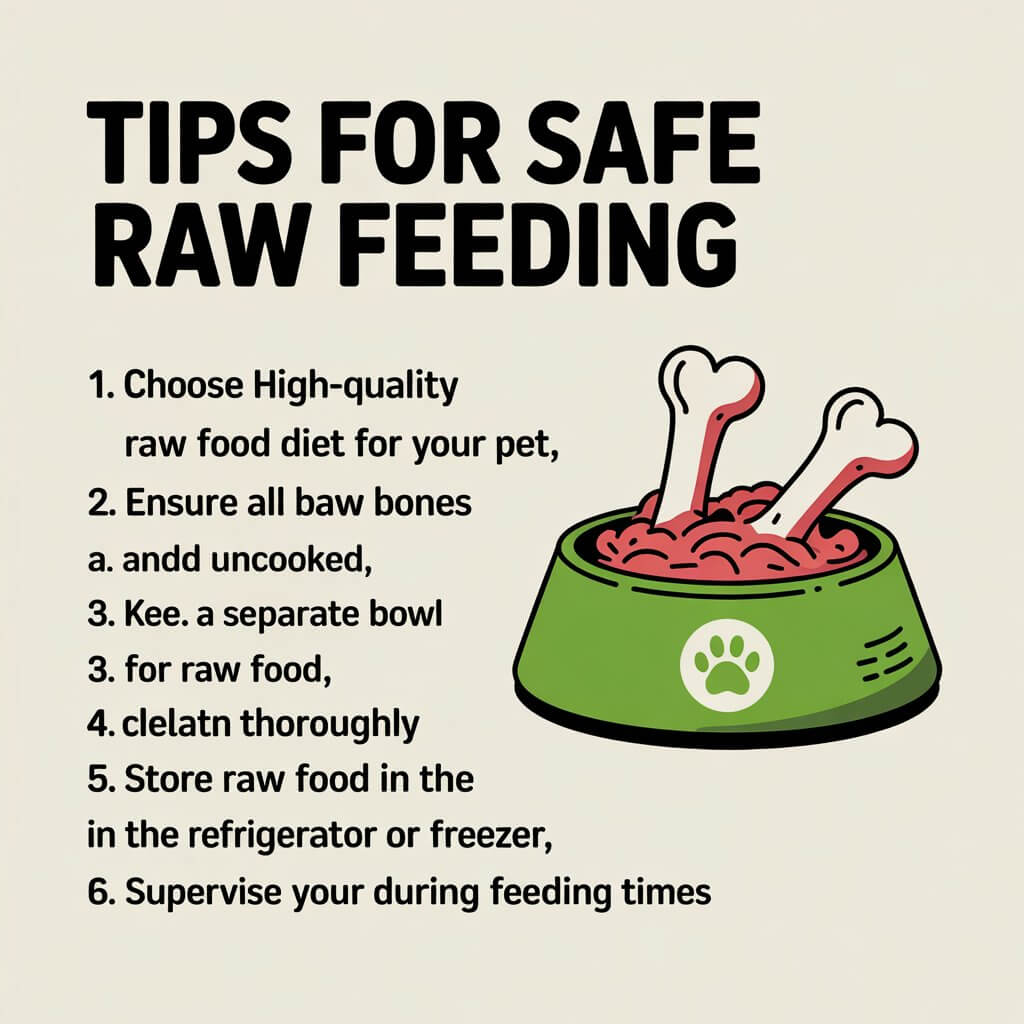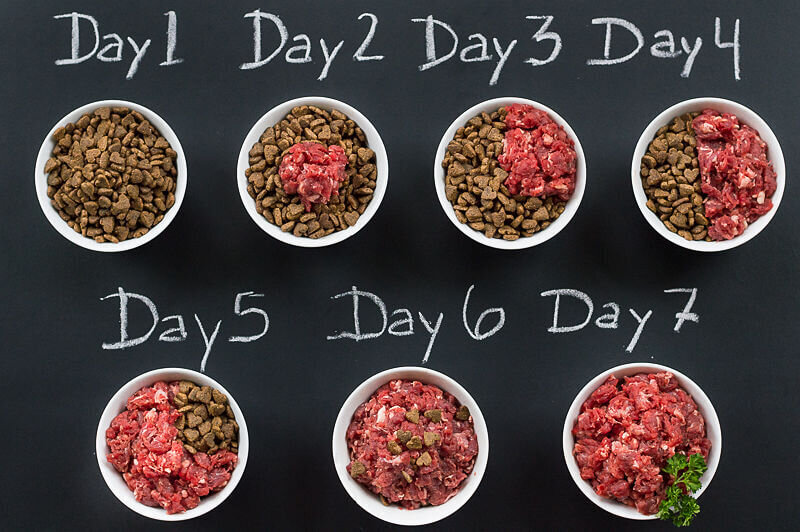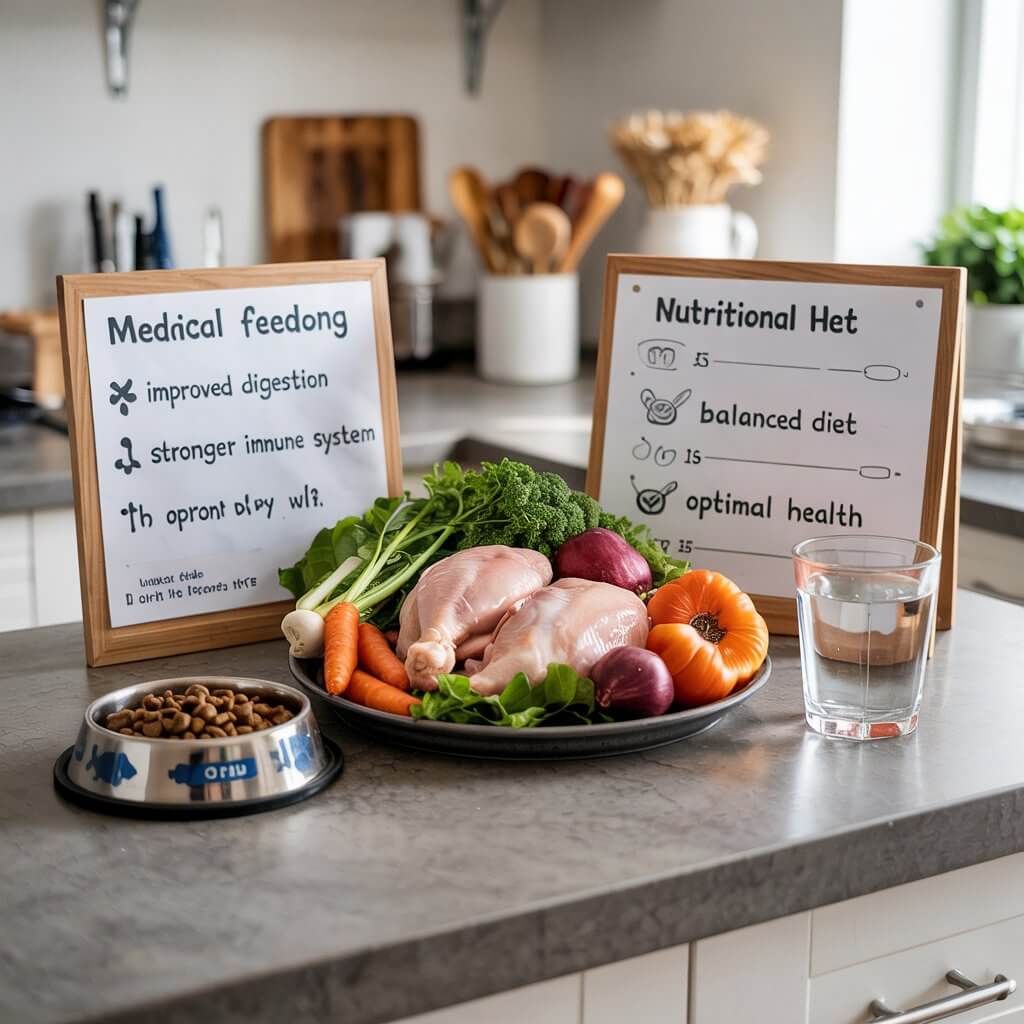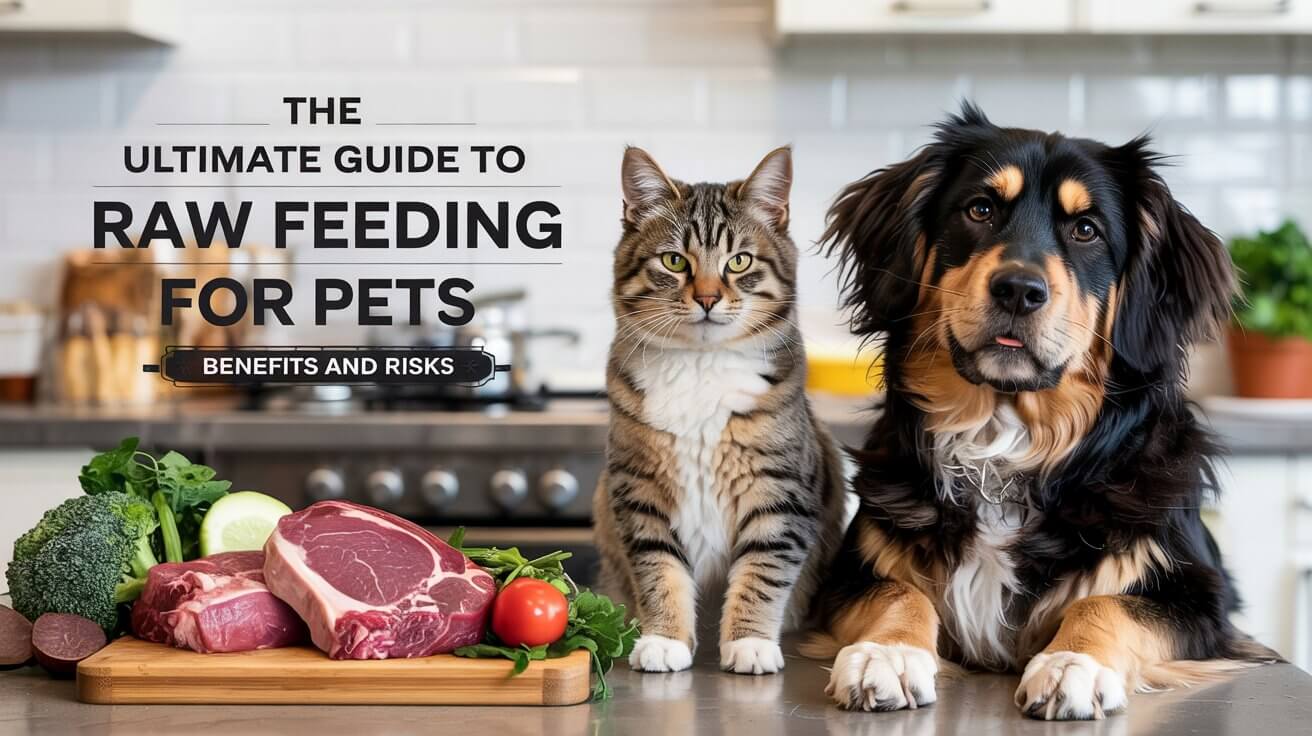Raw feeding for pets has gained popularity among pet owners looking for a more natural and holistic approach to their pets’ diets. While raw feeding offers several benefits, it also comes with potential risks that every pet owner should be aware of. In this comprehensive guide, we will explore the advantages and disadvantages of raw feeding to help you make an informed decision.
What is Raw Feeding?
Raw feeding is the practice of feeding pets, primarily dogs and cats, uncooked and unprocessed foods. These diets typically include raw meat, bones, fruits, vegetables, and organ meats. The idea is to mimic the natural diet of wild animals, promoting better health and vitality.

Benefits and Risks of Raw Feeding
| Improved Digestion | Bacterial Contamination (e.g., Salmonella, E. coli) |
| Healthier Skin and Coat | Nutritional Imbalance if not planned correctly |
| Stronger Immune System | Bone Hazards such as splintering and choking |
| Increased Energy and Vitality | Cost and Convenience Challenges |
| Better Dental Health | Potential for Overfeeding and Obesity |
Benefits of Raw Feeding
1. Improved Digestion
One noticeable benefit of raw feeding is improved digestion. Since raw foods are less processed and contain natural enzymes, they are easier for pets to digest, which can reduce issues like gas and bloating.
2. Healthier Skin and Coat
Raw diets are high in essential fatty acids like omega-3 and omega-6, which promote a shiny coat and healthier skin. Pets on raw diets often show a marked improvement in coat quality.
3. Stronger Immune System
The vitamins and minerals in raw food, especially fresh vegetables and organ meats, can enhance your pet’s immune system, helping them fend off infections and maintain better overall health.
4. Increased Energy and Vitality
Raw feeding can increase your pet’s energy levels, making them more active and playful. This is largely due to the absence of fillers and preservatives found in many commercial pet foods.
5. Better Dental Health
Chewing raw bones helps clean your pet’s teeth, limits plaque buildup, and encourages healthier gums.
Risks of Raw Feeding
1. Bacterial Contamination
Raw meat can contain harmful bacteria such as Salmonella and E. coli, which pose risks to both pets and humans. Proper handling and thorough cleaning are essential.
2. Nutritional Imbalance
If not properly planned, a raw diet can result in nutritional deficiencies or imbalances, especially in calcium and phosphorus. It is essential to consult with a veterinarian or pet nutritionist.
3. Bone Hazards
Feeding bones can be hazardous since they may splinter, causing choking or internal injuries. Always choose safe bones and supervise your pet while they eat.
4. Cost and Convenience
Feeding pets a raw diet can be more costly and time-consuming than using conventional pet food. It is essential to source high-quality ingredients and store them properly to ensure freshness.
Tips for Safe Raw Feeding
- Always purchase fresh, high-quality meats from reputable sources.
- Clean and sanitize food preparation areas regularly.
- Introduce new foods gradually to prevent digestive issues.
- Consult with your veterinarian before transitioning to a raw diet.

Wrapping Up
Raw feeding can offer significant benefits for pets when approached responsibly, but it’s crucial to consider the risks and take appropriate precautions. If you choose to switch your pet to a raw diet, begin the transition gradually and keep a close eye on their health. With the right strategy, raw feeding can contribute to a happier and healthier life for your beloved companion.
Types of Raw Diets for Pets
1-BARF (Biologically Appropriate Raw Food) Diet
The BARF diet emphasizes feeding pets a mix of raw meat, bones, organ meats, fruits, and vegetables. It often includes some form of supplementation, such as vitamins and minerals, to ensure a balanced diet. The goal is to replicate the natural diet that wild animals consume, providing a well-rounded nutritional profile.
2-Prey Model Raw (PMR) Diet:
The PMR diet is designed to provide pets with a complete prey model, which includes the entire animal—meat, bones, organs, and tissues. This approach aims to replicate the natural diet of carnivores in the wild, where they consume whole animals. Typically, the PMR diet consists of 80% meat, 10% bones, and 10% organ meat.
3-Commercial Raw Diets
Some pet owners choose commercially prepared raw diets that offer balanced nutrition in convenient, ready-to-feed packages. These diets are typically available in frozen or freeze-dried forms and are specifically formulated to meet the nutritional needs of pets, making it easier for pet owners to provide the right diet without any guesswork.

How to Transition Your Pet to a Raw Diet
Transitioning your pet from commercial kibble or canned food to raw feeding requires patience and careful planning. Follow these steps for a smooth transition:
1-Start Slowly
Slowly introduce raw food into your pet’s diet over 7-10 days. Start with small amounts of raw meat mixed with their usual food to help their digestive system adjust.
2-Monitor Their Health
Monitor how your pet responds to the new diet closely. Watch for any signs of digestive issues, such as vomiting, diarrhea, or constipation. If you notice any problems, consult your veterinarian.
3-Variety is Key
Offer a variety of meats, bones, and organs to ensure a balanced diet. This variety of nutrients will help prevent potential deficiencies.
4-Maintain Cleanliness
Raw feeding demands higher hygiene standards to avoid bacterial contamination. Always wash your hands and thoroughly clean all food preparation tools and surfaces after handling raw food.

Understanding the Importance of Bone Safety
While bones are an important component of many raw diets, ensuring safety is crucial when feeding bones to your pet. Here are some tips to guarantee bone safety:
1-Avoid Cooked Bones
Cooked bones can become brittle and may splinter, creating serious choking hazards or causing internal injuries. Always feed raw bones that are more flexible.
2-Supervise Your Pet
Always supervise your pet while feeding bones, especially initially. Ensure that the bones are large enough to prevent choking.
3-Bone Types
Generally, soft bones such as chicken wings or turkey necks are safer for pets, while harder bones like marrow bones can be more difficult to digest and cause dental issues.

Potential Long-Term Effects of Raw Feeding
1-Improved Coat and Skin Health Over Time
Over several months of feeding raw, many pet owners notice significant improvements in their pets’ coats and skin health. Raw feeding, especially with omega-3 and omega-6 fatty acids, promotes a shiny, healthy coat and reduces skin irritations.
2-Digestive Health Maintenance
Pets on a raw diet often experience fewer digestive issues, including gas, bloating, or constipation, thanks to the natural enzymes and the absence of fillers commonly found in commercial pet foods.
3-Weight Management
Raw diets can help with weight control, as they are free from high-carb fillers and tend to be more nutrient-dense. This can prevent overfeeding and support a healthy weight for pets.

Common Mistakes to Avoid with Raw Feeding
1-Feeding Inadequate Amounts of Protein or Fat
Raw diets need to be well-balanced to fulfill your pet’s nutritional requirements. Avoid providing too much muscle meat without adequate organ meats, bones, or fat.
2-Not Balancing Calcium and Phosphorus
Calcium and phosphorus must be in the proper ratio to avoid bone and joint issues. It’s important to include both in appropriate amounts, particularly for growing puppies or kittens.
3-Not Consulting a Vet or Nutritionist
Raw diets must be well-balanced to meet your pet’s nutritional needs. Avoid giving too much muscle meat without sufficient organ meats, bones, or fat.

The Environmental Impact of Raw Feeding
While raw feeding can offer benefits for pets, it’s important to consider the environmental impact as well. Sourcing raw ingredients, such as meat and bones, can contribute to a carbon footprint. Pet owners who opt for a raw diet should be conscious of the origins of their food and strive to choose meat that is responsibly sourced and produced through sustainable farming practices.
Final Thoughts: Is Raw Feeding the Right Choice for Your Pet?
Raw feeding may not be suitable for every pet, and there are several factors to consider before making the switch. While the potential benefits can be impressive, it’s essential not to overlook the associated risks. If you choose to implement a raw diet for your pet, make sure to do so safely and under the guidance of a professional. With careful planning and attention to detail, raw feeding can provide significant health benefits for your pet, but it’s crucial to make informed decisions to support their overall well-being.



